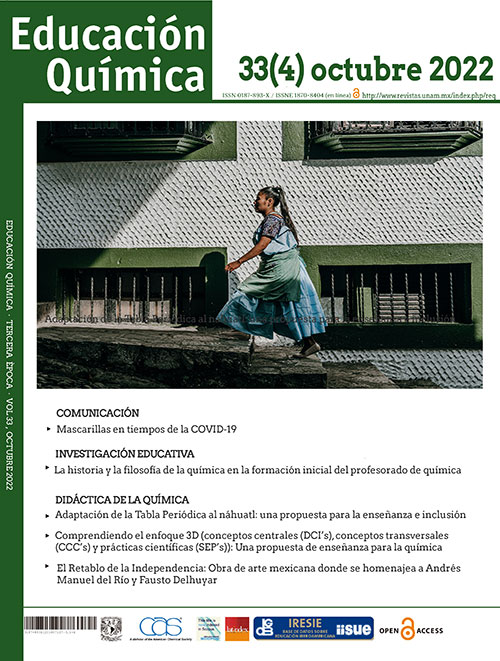Understanding the 3D Approach (Disciplinary core ideas (DCI’s), Crosscutting concepts (CCC’s) and Science and engineering practices (SEP’s)): A Teaching Proposal for Chemistry
Main Article Content
Abstract
This work seeks to help teachers and researchers to understand the three-dimensional approach to science teaching. This through the exposition of the meaning and intention of each dimension of the 3D approach and the proposal of an activity with said approach, for the teaching of the topic of periodicity. A brief analysis of the differences between the new Chemistry III curriculum (proposed in 2017 for the ENP) and the 3D perspective of the NRC is presented. Which, despite the reduction of topics, retains a traditional approach in which the dimensions of the three-dimensional approach (central concepts (DCI’s), transversal concepts (CCC’s) and scientific practices (SEP’s)) are not considered. After presenting and making a comparative analysis, it is introduced an activity that seeks to show how to implement this 3D approach in the chemistry classrooms of the baccalaureate. Particularly in this activity, students are introduced to the situation in which Medeleyev put the cards of the elements in order. In this case, the elements are fictitious, but they are related to the elements of the current table. In the activity, the following components are developed for each dimension: Structure and properties of matter (DCI’s); modeling (SEP’s); Structure and function, Patterns, similarity, and diversity (CCC’s). The activity is a proposal to be tested with high school students.
Article Details

Educación Química por Universidad Nacional Autónoma de México se distribuye bajo una Licencia Creative Commons Atribución-NoComercial-SinDerivar 4.0 Internacional.
Basada en una obra en http://www.revistas.unam.mx/index.php/req.
